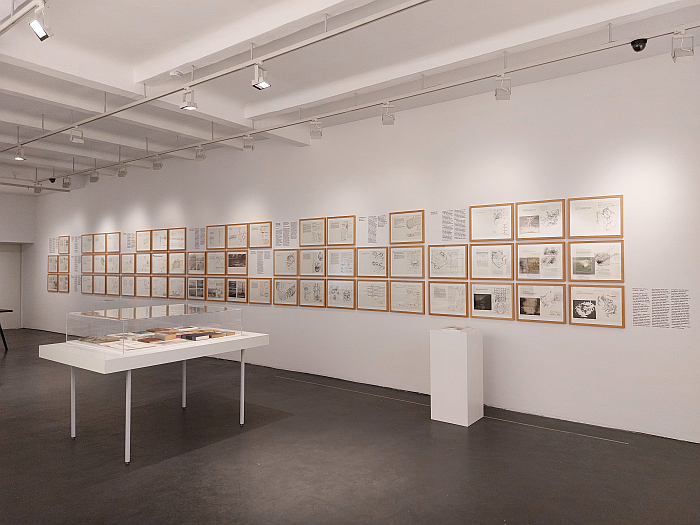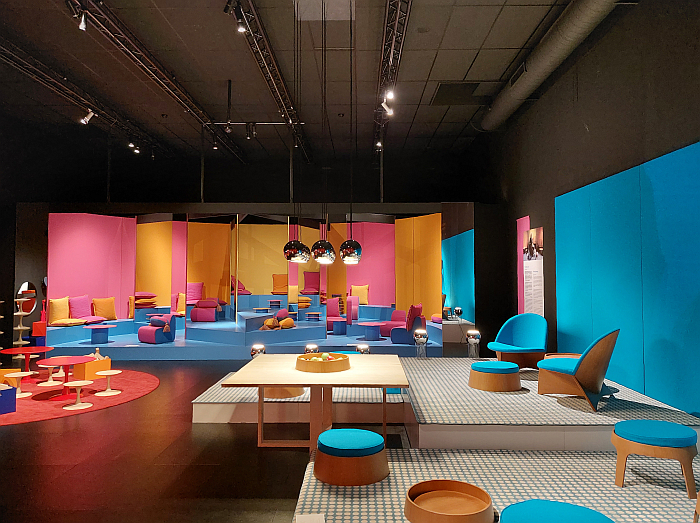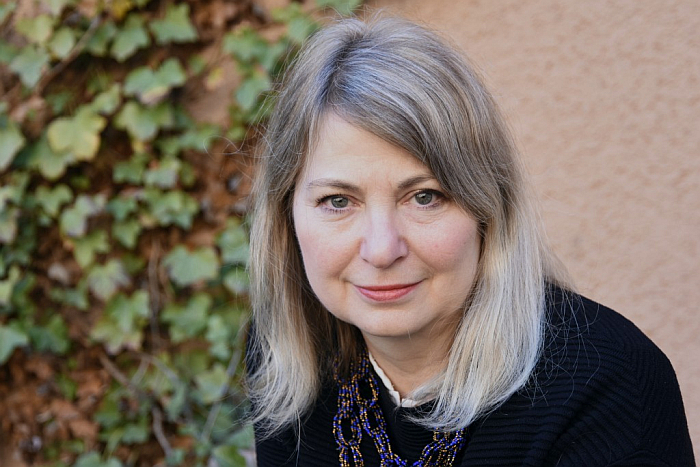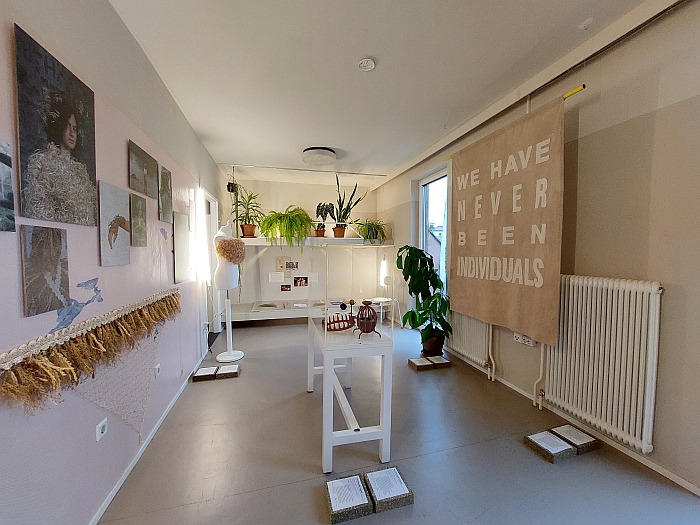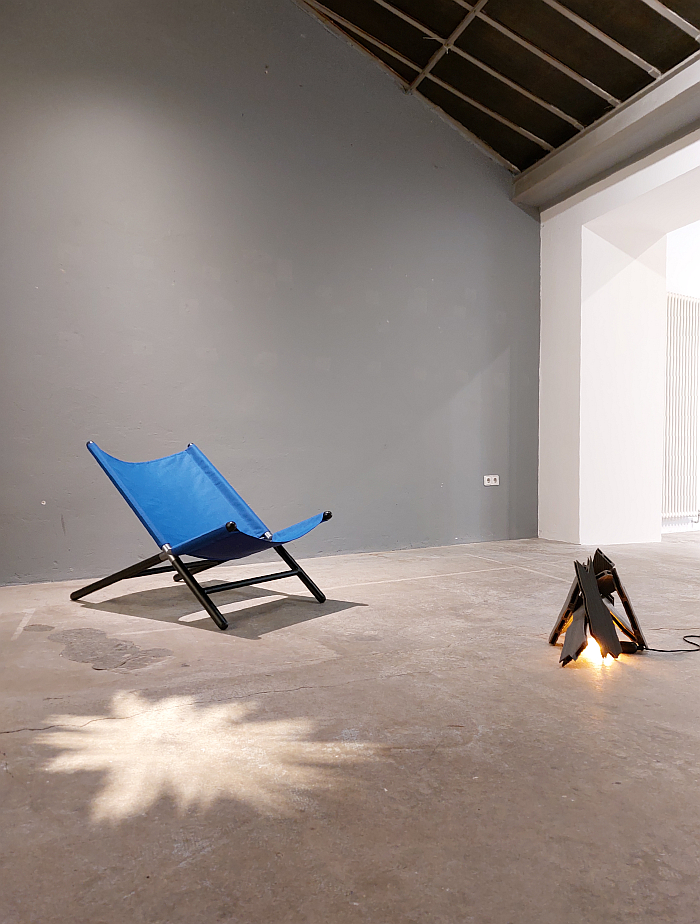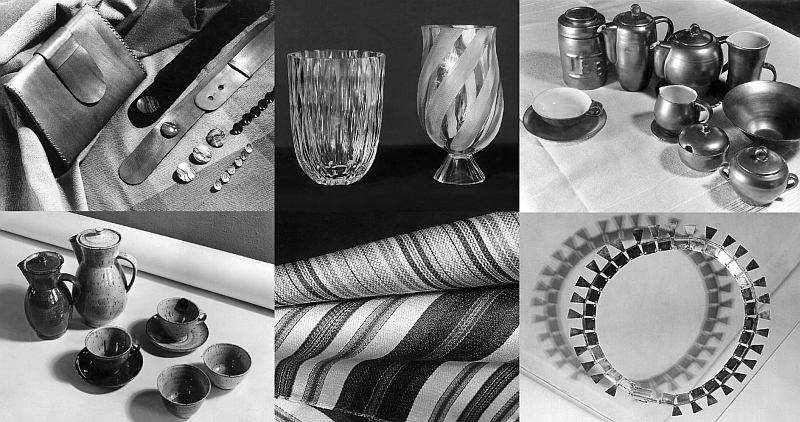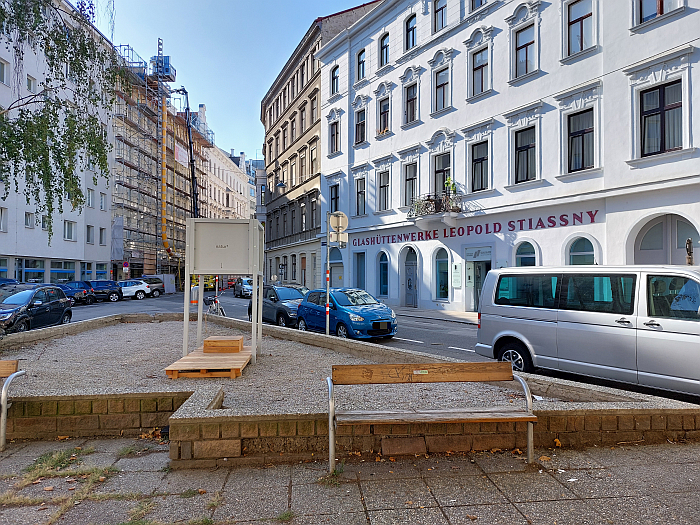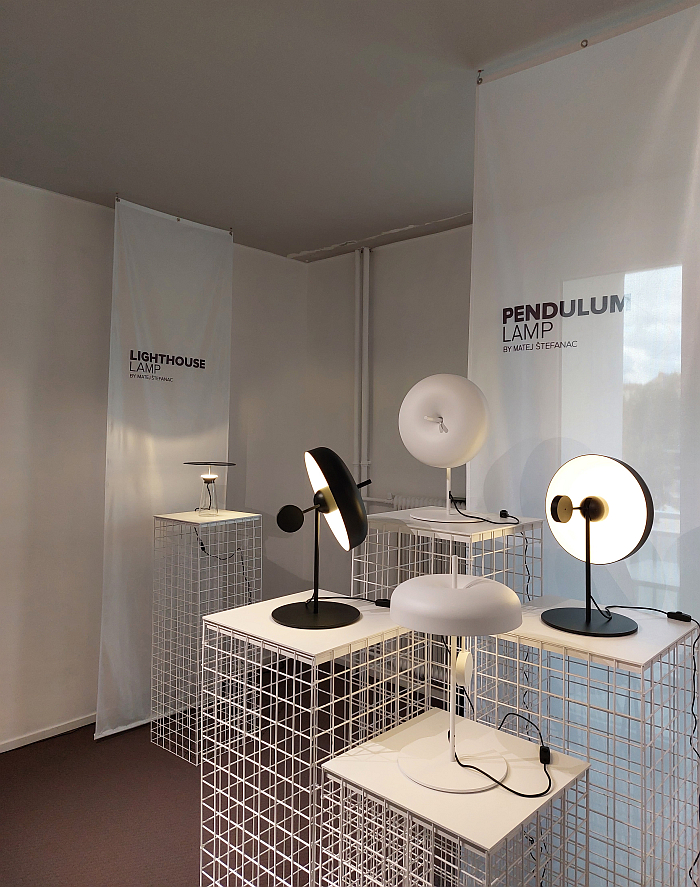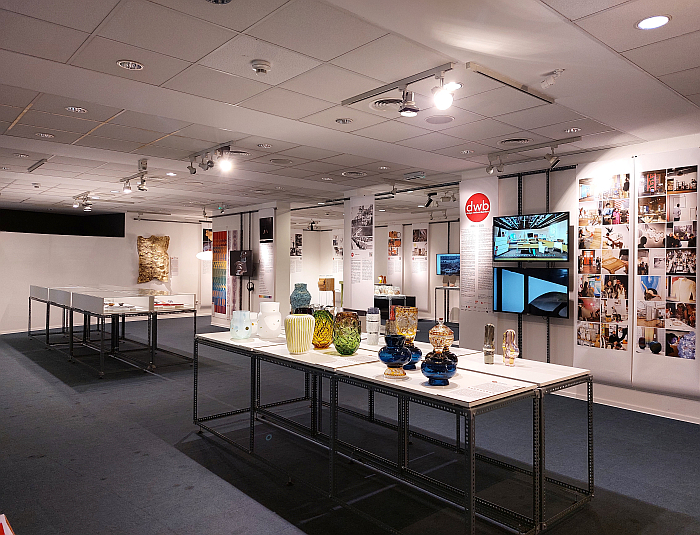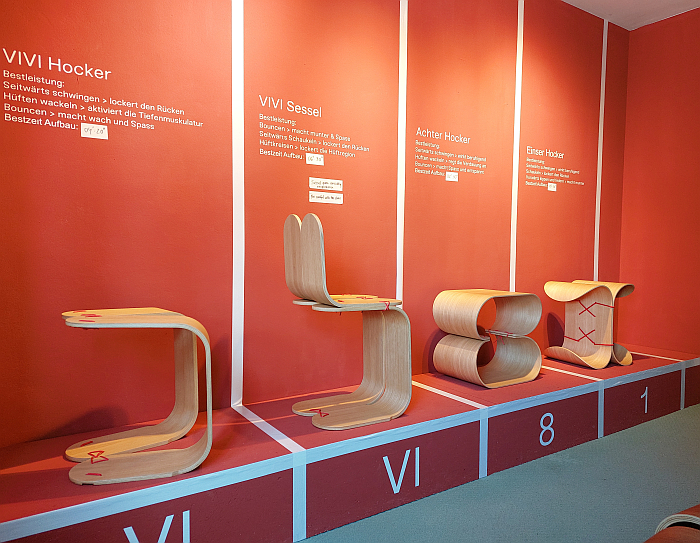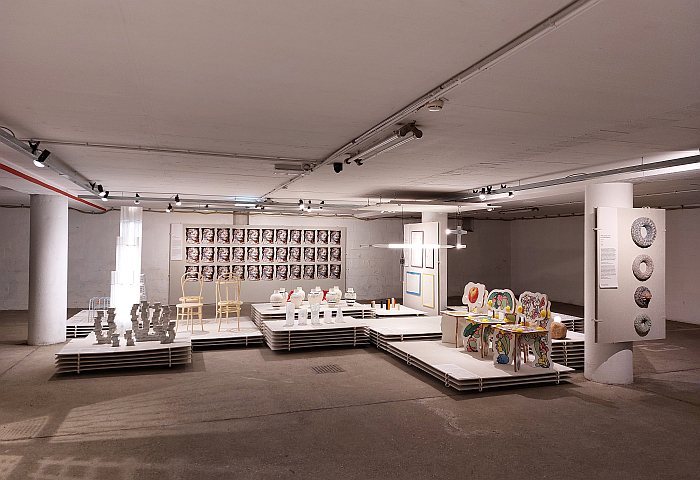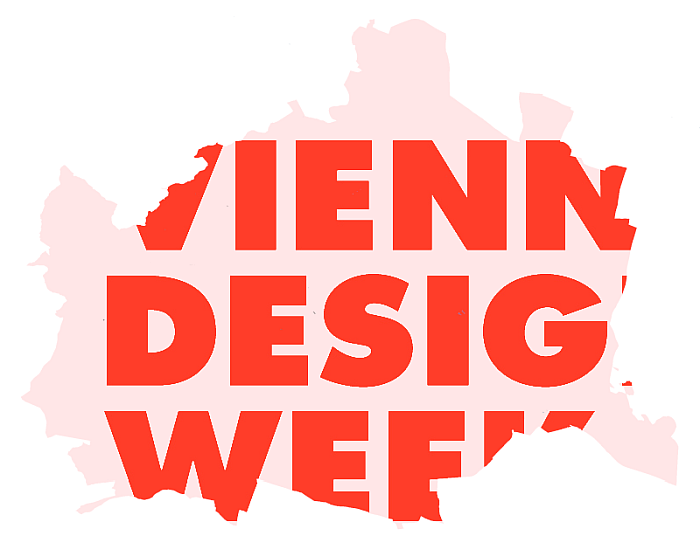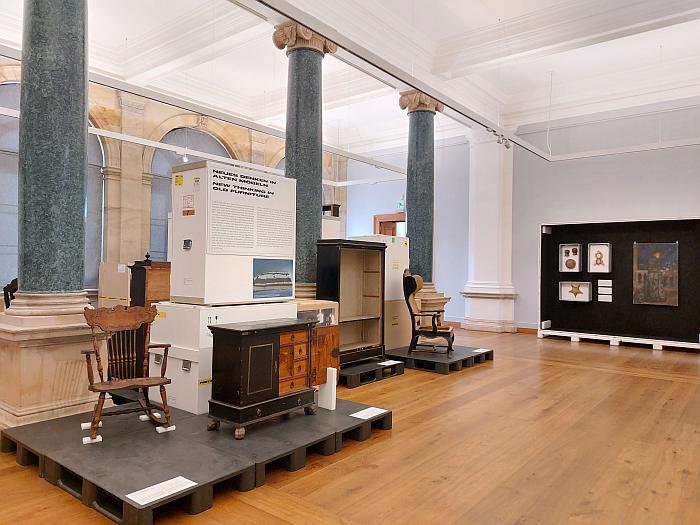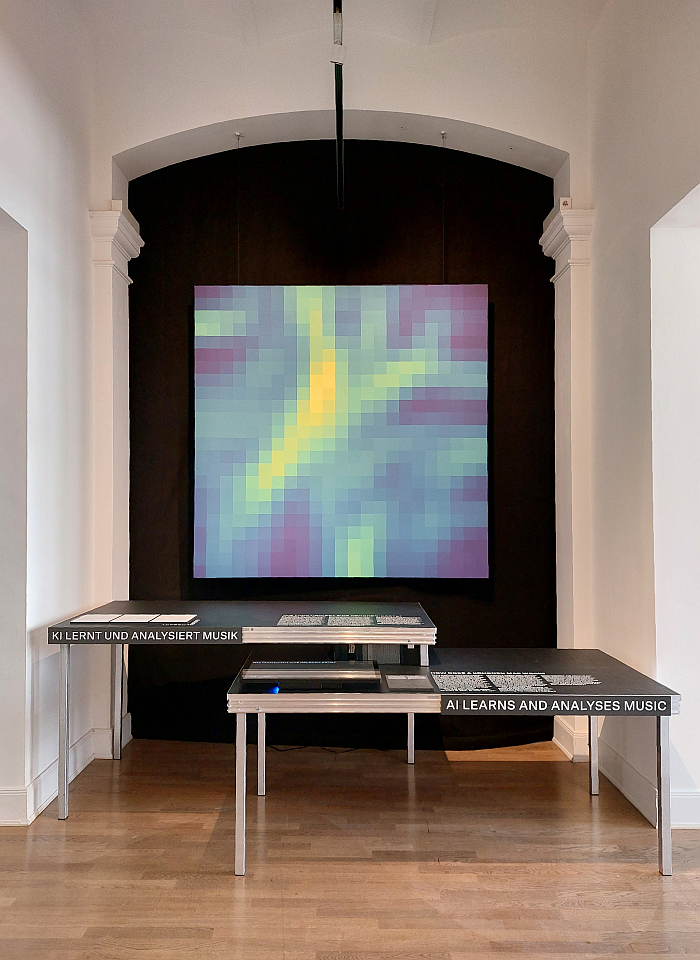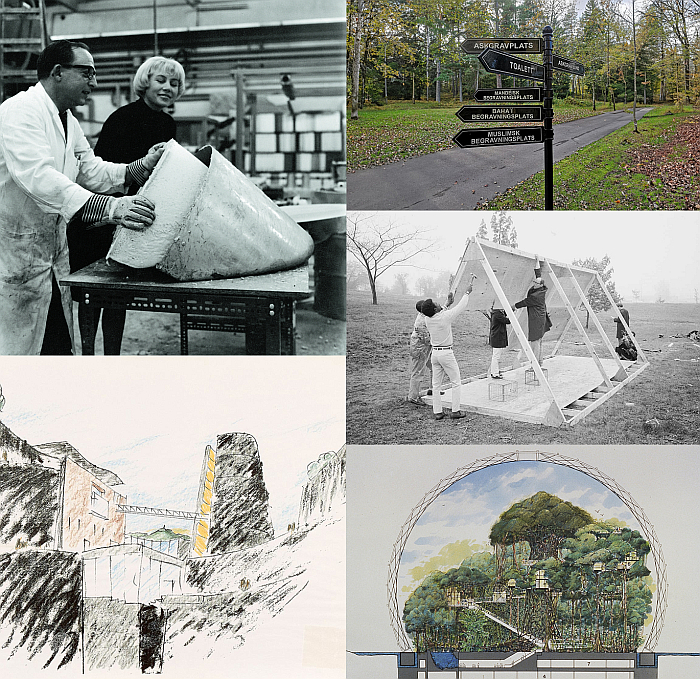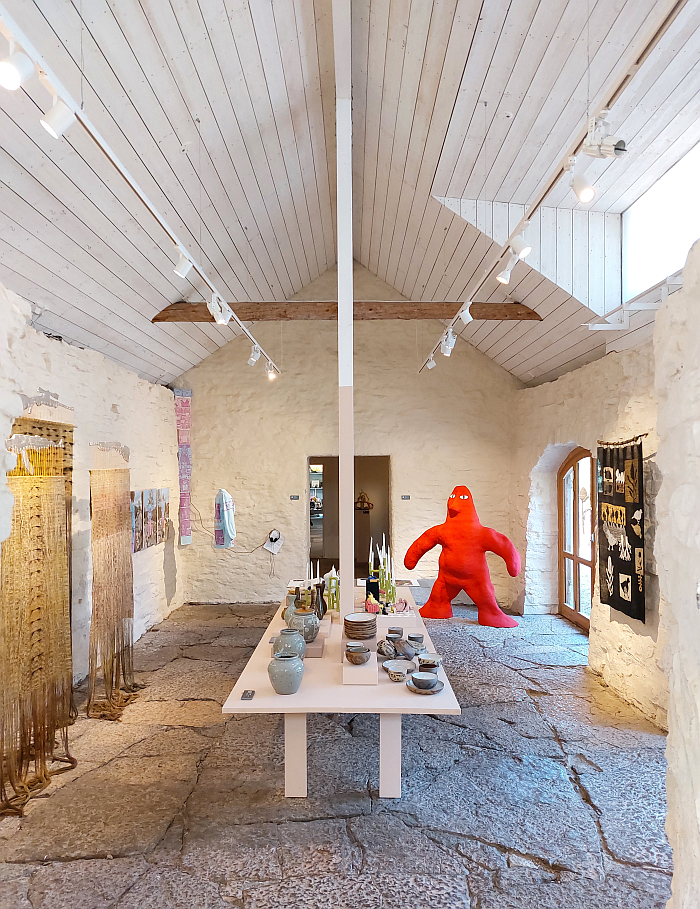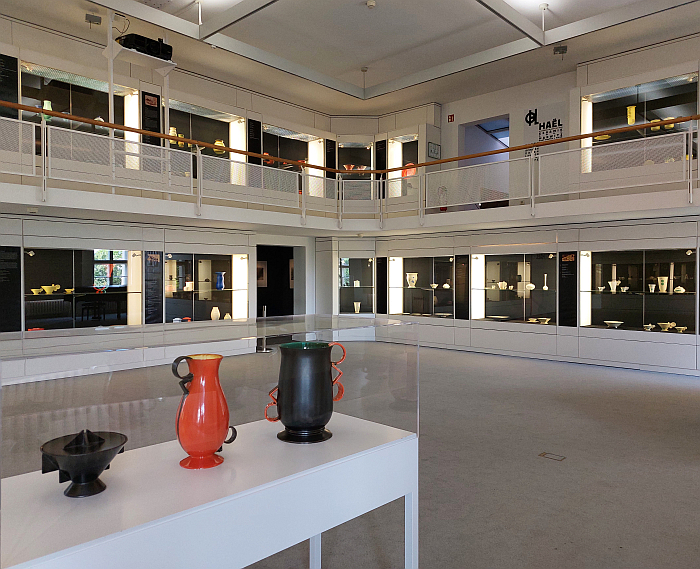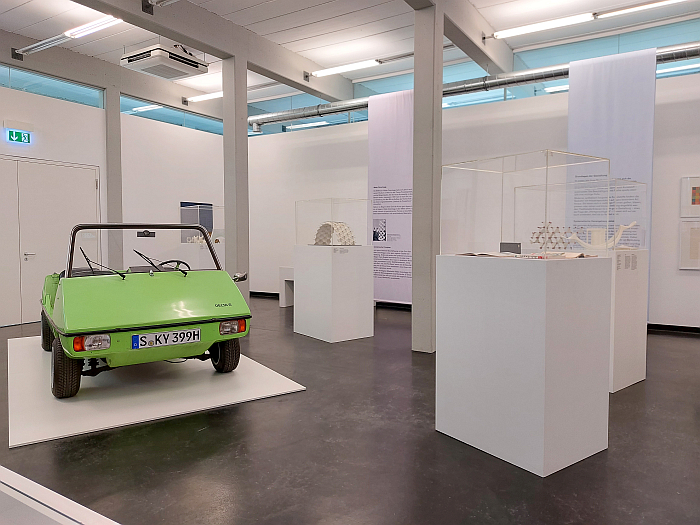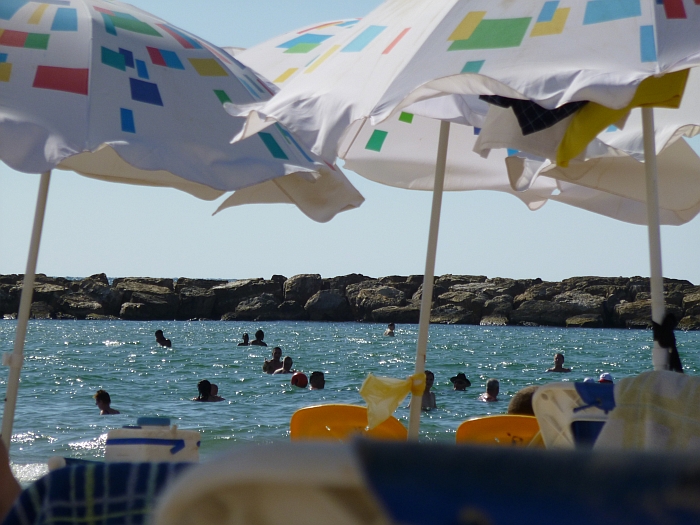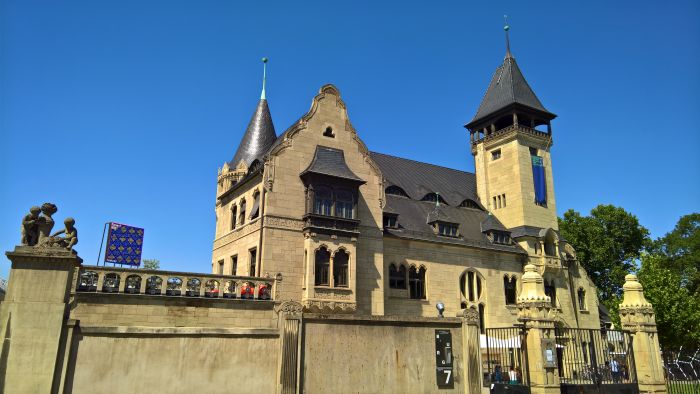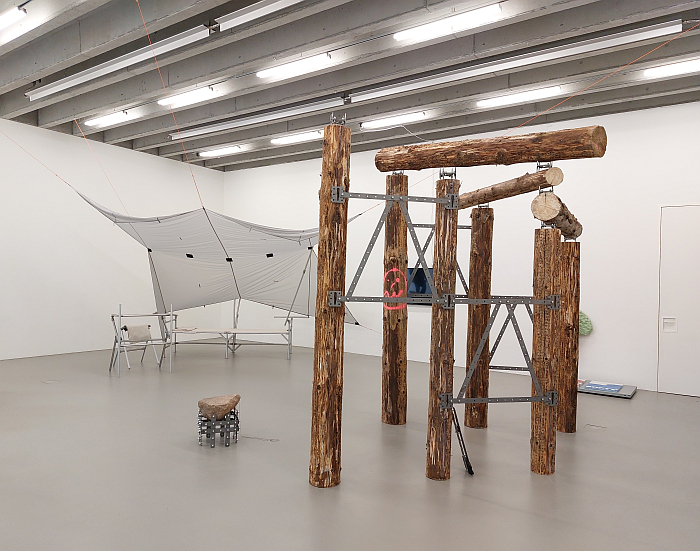The Tube. An Architecture for Conceivable Times at the Werkbundarchiv – Museum der Dinge, Berlin
“If we want to survive, if we want to reach the next level”, postulated the German architect Günther L. Eckert in 1980, “we simply have to risk the impossible. It is too easy to invest only in common logic and to dismiss everything that does not have these specific characteristics, everything that encroaches into the incorruptible dimensions of creative self-consent”.1
Günther L. Eckert’s “impossible”, his distancing from “common logic”, his encroaching “into the incorruptible dimensions of creative self-consent”, was the so-called Kontinuum, Continuum, a 250 metre diameter tube which formed a complete, unbroken, circle around the globe, constituted a Kontinuum around the globe, and in which all humanity was to live.
With the exhibition The Tube. An Architecture for Conceivable Times, the Werkbundarchiv – Museum der Dinge, Berlin, introduce Eckert’s Kontinuum and thereby allow space for reflections on not only architecture and the built environments we create for ourselves, and the whys and wherefores of those environments, but also on the possibilities for the future of both human societies and the natural environment on which we all depend.
And an exhibition on a Kontinuum that is also the last Werkbundarchiv – Museum der Dinge exhibition in their long-time home in Berlin-Kreuzberg, marks the end of their continuance in Berlin-Kreuzberg, before their imminent, involuntary, investor enforced relocation…….
Nanna Ditzel. Taking Design to New Heights at Trapholt, Kolding
“Something is happening to the way people live” opined Nanna Ditzel in 1961; changing realities which caused her to reflect that, in terms of our furniture and interiors, “don’t we carry around a whole load of stuff that is old and defunct – and could actually be different.”1
With the exhibition Nanna Ditzel. Taking Design to New Heights, Trapholt, Kolding, explore how Nanna Ditzel approached and understood and realised that “different”…….
smow Blog Interview: Sabine Epple – Grassimesse should be a pulse monitor for new tendencies
Arising from the discussions and discourses of the earliest years of the 20th century on the production of, materials of, forms of, and relationships with our objects of daily use in context of the increasing industrialisation of the, then, Germany, and in context of the increasing globalisation of the, then, Europe, the Leipziger Grassimesse1 quickly established itself amongst both avant-gardists and those of a more traditional persuasion, and in doing so became, arguably, one of the more important platforms for a continuation and development of those early 20th century discourses and discussions throughout the 1920s and 30s.
Then, as so oft in the (hi)story of Leipzig, came the NSDAP, then the War and then the DDR, and while events were staged that employed the name ‘Grassi’, the political context, and political interference, of both dictatorships, made and makes them difficult to class as Grassimessen in the sense of the pre-1940s events. And thus the Grassimesse was for a great many years a closed chapter in the (hi)story of creativity, industry and Leipzig before in 1997, the post-DDR Grassi Museum für Angewandte Kunst awoke the Grassimesse from its enforced, and involuntary, slumber.
Since 2000 the Grassimesse has been staged under the direction of Sabine Epple, Curator of the Museum für Angewandte Kunst’s Modern Collection, with whom we met up to discuss the Museum, the Messe, developments since 1997 and also the approaching 2023 edition of the Grassimesse…….
Of Gardens and People. Designed Nature, Art and Landscape Architecture at the Austrian National Library, Vienna
Much as the (hi)story of architecture is also a chronicle of developments and changes in the social, cultural, economic, ecological, technical, et al realities of any given region, so to is the (hi)story of a region’s parks and gardens and urban green spaces.
Whereby the (hi)story of the latter is much less often popularly employed in studying and interpreting and learning from the (hi)story of a region than the former.
With the showcase Of Gardens and People. Designed Nature, Art and Landscape Architecture the Austrian National Library, Vienna, allow for reflections on gardens and parks throughout (hi)story and in doing encourage us all to take them as seriously as we do the architecture amongst which they invariably stand…….
Campus Grassimesse
For all that the annual Leipzig Grassimesse is and always has been as a sales fair, a place to peruse, discourse with and purchase, contemporary craft, applied art and design, and thereby an opportunity to support contemporary craft, applied art and design practitioners, or perhaps more accurately an opportunity to support those practitioners whose practice you most enjoy, it has also always been a platform for creative schools and their students to present their works and approaches and positions; the inaugural Grassimesse in 1920 featuring students from the Staatliche Kunstschule für Textilindustrie Plauen, the Kunstakademie Düsseldorf, the Kunstgewerbeschule Magdeburg, the Kunstgewerbeschule Nürnberg and the Handwerker- und Kunstgewerbeschule Halle, the latter an institution who in their various guises since 1920 have been more or less ever presents at the Grassimesse.
And will be present at the 2023 Grassimesse where, as Burg Giebichenstein Kunsthochschule, Halle, they will present current projects alongside students from the Kunsthochschule Weißensee Berlin, the Universität der Künste Berlin, HAWK Hildesheim, the Hochschule Wismar, the Staatliche Akademie der Bildenden Künste Stuttgart and the Alchimia Contemporary Jewellery School, Florence.
Yet for all that schools have always been a pillar on which the Grassimesse stands, they are one that can be all too easily overlooked amidst the perusing, discoursing and purchasing. Thus ahead of the 2023 edition by way of helping reinforce that the Grassimesse is more than the selected exhibitors and their works, we thought we’d take a brief moment to reflect on some of those schools who’ve graced the halls of the Grassi Museum, and thereby allow for reflections on both the (hi)story of creative education and also on the Grassimesse as a platform for schools and a coming generation of creatives as much as one for those creatives currently practising…….
5 New Architecture & Design Exhibitions for October 2023
In 1981 Irish stadium rockers U2 noted of October:
“And the trees are stripped bare,
Of all they wear”
That of course was 1981, before the, then approaching but much less tangible, irreversible consequences of climate change meant that the trees in Ireland, and across Europe, still proudly wear their leaves throughout October. A new reality that, we’d argue, may soon see U2 forced to rename the song ‘November’.
A reality, and a coming renaming, that sets the final line of the opening verse:
“What do I care?”
in a new, a troubling, and an important light.
One we all need to think about.
And little stimulates thoughts on contemporary and future society, contemporary and future relationships with the world around us, both the natural and humanmade, and forces a questioning of what we want, why we want it, and if we care, quite like an architecture and/or design exhibition.
Our five recommended new exhibition openings in October 2023 can be found in Chemnitz, Hornu, London, Brussels and Milan…….
Vienna Design Week 2023: Design Without Borders at Collegium Hungaricum
Established in Budapest in 2004 by textile designer Szilvia Szigeti and her interior designer husband Tamás Radnóti, Design Without Borders understands itself, and summarising to the point of inaccuracy, as a platform for international design dialogue across, or perhaps more accurately indifferent to, not only national borders but borders of genre, scale, approach, position et al.
By way of preparing for the platform’s forthcoming 20th birthday a showcase of projects presented, hosted, by Design Without Borders over the past two decades is being staged in context of Vienna Design Week 2023.
A presentation that allows some insights into the aforementioned understandings of itself, and also access to some reflections on the realities of contemporary design in Europe…….
Vienna Design Week 2023: Fokus – The Series
There is an argument to be made that while variation and uniqueness are inherent features of craft processes, design strives for the production of endless uniformity.
Or perhaps more accurately design did: while the earliest design practitioners, and those of the 1920s and 1930s who followed them, very much (largely) sought to develop products that contemporary industry could produce en mass as exact replicas of one another, since the 1960s individuals and groups of designers have sought to move away from the design of the identical for a society that is diverse; have sought to develop either systems that allow for individual expression and individual adaptation and/or to develop production processes that inherently and intrinsically enable and foster and realise variety without fundamentally questioning the idea of industrial multiplication and reproduction.
With the showcase The Series Vienna Design Week 2023 allows space for reflections on approaches by contemporary designers to designing for variety, and thereby also for differentiated reflections on contemporary design…….
Vienna Design Week 2023, Griaß di!
It’s been a while, and we were beginning to think it would never happen again; however, after an inordinately long absence September 2023 sees us once again meet up with Vienna Design Week…….
Klassik Stiftung Weimar Theme Year 2023: Wohnen
In context of the 1923 Bauhaus exhibition in Weimar, that first wide-ranging presentation of the school, its work and its understandings of itself and the world in which it existed, the institute presented with the Haus am Horn by Georg Muche and its interior, furniture, fittings and accessories by the likes of, and amongst others, Erich Dieckmann, Alma Buscher, Otto Lindig, Benita Otte or Marcel Breuer, a synopsis of the prevailing understandings of and positions to domestic arrangements and domesticity amongst the Weimar Bauhäusler.
With their 2023 theme year Wohnen the Klassik Stiftung Weimar take us all back to a century and a bit before Haus am Horn and to understandings of and positions to domestic arrangements and domesticity in the late-18th/early-19th century Weimar of Goethe, Schiller, Wieland, Herder et al.
And also consider possible future understandings of and positions to domestic arrangements and domesticity as we all move towards 2123…….
Can You Hear It? Music and Artificial Intelligence at the Museum für Kunst und Gewerbe, Hamburg
Music was my first love, And it will be my last,
Music of the future. And music of the past.
confided to us all the English singer John Miles in 1976, and thereby both tending to confirm the fundamental place music has, has had, in human civilisations and societies, music as an ancient and eternal force in human civilisation and society, and also through setting the future before the past, a setting, yes, not unrelated to the requirements and provisions of the ancient laws of rhyme, most poetically reminding us all that that which is before us will one day, via processes we don’t understand yet seek to control, be behind us.
And thereby also reminding us all that the music of the future is every bit a component of a contemporary society as is the music of the past.
With the exhibtion Can You Hear It? Music and Artificial Intelligence the Museum für Kunst und Gewerbe, Hamburg, offer space for reflections on music, and musicians, past, future and present.
And by extrapolation for reflections on design past, future and present…….
5 New Architecture & Design Exhibitions for September 2023
In the alpine regions of Europe the arrival of September marks the start of the Almabtrieb, that annual migration of the cattle, sheep and goats of the region from their high pastures to the valleys far, far below.
A migration undertaken because, as the cattle, sheep and goats of the alps innately understand, September is the month when the global architecture and design museum community (slowly) end their summer siesta and begin to invite us all to peruse their autumn/winter exhibition programmes.
And a migration that looks particularly worthwhile in September 2023, being as it is abloom with a crop of new showcases every bit as enticing and flavoursome as the herb rich pastures of any alpine alm. Indeed so bountiful is the September 2023 harvest we could have written two lists. For probity’s sake we stick with the one.
Our five reasons for saying Servus, Tschüs and Adieu to the fresh air and green, green, grass of the high alps and venturing into the city can be found in Frankfurt, New York, Kolding, Vienna and Malmö…….
Capellagården Summer Exhibition 2023
We’re not saying that Capellagården is the best design school in the world.
But would say it is, without question, one of the most delightful and most engaging and most relaxing to visit, one of the best to visit.
A genuine joy that was denied us during the Covid years.
But one we weren’t going to give up on.
In summer 2023 the stars aligned and we ventured once again over the seas to Öland…….
Haël. Margarete Heymann-Loebenstein and her workshops for decorative ceramics 1923-1934 at the Bröhan Museum, Berlin
The popular Bauhaus focus, preoccupation, of discussions on creativity in the 1920s very naturally leads to us all ignoring other important protagonists, causes us all, when oft unwittingly, to miss other equally valid, and enjoyable, paths to appreciations of developments in craft, design, technology and our objects of daily use in the early decades of the 20th century, that important, and still very relevant, period where handwork increasingly ceded to industry.
With Haël. Margarete Heymann-Loebenstein and her workshops for decorative ceramics 1923-1934 the Bröhan Museum, Berlin, helps one locate, and begin to explore, one of those regularly overlooked paths and thereby allows one to begin to develop those more probable appreciations…….
The Historia Supellexalis: “S” for Switzerland
Switzerland
A Confoederatio; A Range; A Context
Plastic Material − Magic Material: Freedom and Limits of Design at the HfG-Archiv, Ulm
Arising in the early 1950s from a collective, a community, who had been ardently opposed to the NSDAP, their world view and their warmongering dictatorship, the Hochschule für Gestaltung Ulm understood itself very much in context of the post-War re-development of society, the post-War development of a new democratic, future-resilient, society. In West Germany and further afield.
Thus it is little wonder that synthetic plastics, that material class which post-War offered, embodied, (seductively, unscrupulously) foretold, the promise of a borderless democracy, an egalitarian global society, should have been a material of experimentation and utilisation at the Hochschule für Gestaltung Ulm.
With Plastic Material − Magic Material: Freedom and Limits of Design the HfG-Archiv, Ulm, reflect on synthetic plastics in context of the Hochschule für Gestaltung Ulm. And also in context of society and democracy…….
5 New Architecture & Design Exhibitions for August 2023
Summer Break!!!
As in August 2022!!
And once again, not us, we’re here, we’re busy, we’re keen, we’re chomping at the bit; but the international architecture and design museum community have very clearly decided amongst themselves not to open new exhibitions in August. Whereby, yes, August always was a slow month for new openings but that in August 2022 and August 2023 we should find but one new showcase is a signal of something more than a coincidence.
And, as with August 2022, one exhibition is clearly not a list.
Thus in place of a list of new exhibitions, we offer here two geographically arranged lists of those architecture and design exhibitions on show in August 2023 and which you can, should, must, visit.
Whereby, and as ever, the list is in no way exhaustive, we have without question missed interesting and informative showcases, so please check local press for what is happening wherever you happen to be…….
Burg Giebichenstein Kunsthochschule Halle Jahresausstellung 2023
As we were preparing for our trip to Halle and the 2023 Burg Giebichenstein Kunsthochschule Jahresausstellung one of those people on the edge of the smow Blog, one of those people who are so important to its operation, asked us how many summer exhibitions we’d seen at Burg Halle.
A question that caused a terror to develop within us as the enormity of the number forming before our eyes became ever more distinct and discernable; but then, before we gave vocal form to such an improbable, hair-raising, number, we regained our composure, “None”, we replied, “for similar as each summer exhibition may be, it’s always a virgin experience”.
Eyes were conspicuously rolled as our questioner walked away, and as we set off for Halle…….
Grassimesse 2023: Meet the selected exhibitors…….
Unlike a great many international craft, applied art and design fairs, entry to the annual Grassimesse Leipzig is strictly by jury selection. And has been since the first edition in 1920. ’twas, in many regards, one of the pillars on which the event established its reputation. And one which helps it maintain that reputation.
The 2023 Grassimesse jury recently convened to review the abundance of applications for this year’s edition, up some 33% on 2022, and, and perhaps more satisfyingly, featuring applications from creatives in 13 countries, an indication of the event’s ongoing international appeal and relevance, from whom they selected 82 exhibitors representing a wide spectrum of craft, applied art and design genres, from jewellery to furniture, from glass to toys, from millinery to ceramics and beyond; including 18 international exhibitors from Italy, Sweden, Hungary, Austria and the Netherlands.
All 82 of whom will assemble in the Grassi Museum für Angewandte Kunst, Leipzig, in late October.
And all 82 of whom are in with an equal chance of picking up the €2,500 Grassimesse smow-Designpreis.
Who that is, who will go down in history as the inaugural winner of the Grassimesse smow-Designpreis, will be decided by the international jury on Thursday October 19th.
Watch this space!!!
Until then you can peruse the exhibitors/candidates at www.grassimesse.de and select your favourite, and/or find your new favourite creative. Or perchance find several convincing arguments to enjoy a late October weekend in Leipzig yourself…….
Hochschule für Bildende Künste Hamburg Graduate Show 2023: Unfinished Business
As we noted, almost exactly 12 months ago, although we here at smow Blog are more or less fully up and running again after the Covid enforced disruption, the extremely complex nature of the smow Blog machinery means that there are still a few elements of the whole that are awaiting a proper re-boot, including, as we noted almost exactly 12 months ago, our famed, and falafel fixated, annual #campustour through European design school summer exhibitions.
Which doesn’t mean that we aren’t visiting design school summer exhibitions. We very much are. Nor does it mean we aren’t eating falafel. We very much are. Just means we’re doing so in a much less structured, less coherent, manner. And means that we don’t always have the time and space to post from those showcases we visit. But do always try. Last year, admittedly, our attempts didn’t get much beyond Weimar. And (nominally) Brussels. Although we were at a great many more.
This year we’re hoping for a much improved number of postings, starting in Hamburg and the Hochschule für Bildende Künste’s 2023 Graduate Show, Unfinished Business…….
